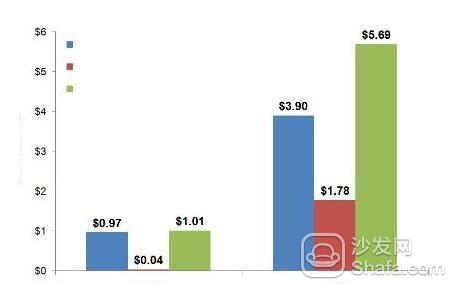During CES 2015, the organizer CEA (Consumer Electronics Association of America) released OTTVideoConsumption - "OTT Video Consumption" report on ResearchSummit. Related reports provide relevant, up-to-date, top-level market information. The following is the compilation of the main content.

Then, after more than half a year, what's the status quo? The purpose of CEA's OTTVideoConsumption report released in January 2015 is to understand the current status of consumers watching OTT video content and to understand how they consume OTT video content. In particular, the main purpose is the following four aspects:
(1) Understand how people watch OTT video content at home;
(2) Understand how people receive OTT video content at home;
(3) determine whether "having streaming media terminal equipment" will affect (the author's note: refers to the negative impact) to people's willingness to purchase smart TV;
(4) Understand how people's consumption of OTT video content may affect traditional TV services.
According to the OTTVideoConsumption released by CEA during January 2015 during CES, the number of consumers who watch online videos via OTT streaming video accounts for 63% of the total - are approaching the consumption of viewing video content through platforms of traditional TV service providers. The number of people (the proportion of the total is 68%).
Even so, Mr. Steve Koenig, CEA’s director of industry analysis, said: “While people’s video viewing habits are changing, traditional TV sets are still the primary terminal for people to watch video content. Indeed, more and more consumption The audience is watching streaming video through multiple types of portable mobile smart devices, but when asked by our research group about what they like to watch at home via their terminals, there are up to five points. The third (a specific ratio of 58%) is a television terminal."
(Note from the author: According to the contents of the previous paragraph and the next paragraph, this refers to the fact that people watch the contents of traditional radio and television programs through television terminals. The next paragraph refers to people passing TV terminals watch network audiovisual/network video content transmitted over the public Internet. This is the biggest difference between the two.)
In addition, related studies of CEA have also found that people are more inclined to use TV terminals than to use portable mobile terminals for streaming video content through OTT at home.
(1) More than half (specifically, the ratio is 52%) consumers watch TV programs via streaming media via smart TV terminals;
(2) About one-third of people use mobile connected terminal equipment (author's note: this refers to a mobile smart terminal device that accesses a home Wi-Fi network), mainly: laptops (37% ), smart phones (35%) and tablet computers (29%).
(Note from the author: From the above content, we can also summarize some developments that are very important for people’s audiovisual content consumption habits: 1 At home, whether watching television programs provided by traditional broadcast television networks or IPTV private networks , Or watch online video programs transmitted by emerging video service providers over the public Internet, people are more inclined to use large-screen TV terminals; 2 in the above two ways, the latter has approached the former - the proportion of the latter The percentage of the former is 52%, and the former is 58%. 3 As to whether the video content is streamed through a portable, mobile terminal or through a TV terminal, the application scene is very large - so even for the emerging ones. OTTTV service, this feature also follows the traditional statistical laws; 4 together, not only the number of OTTTV consumers are approaching the number of consumers of traditional broadcast / multicast TV services, but also on the TV terminal side, The number of audiovisual content consumers watching emerging OTTTV is also approaching the traditional broadcast/multicast television network view The number of consumers of audiovisual content of television programs.)
Recommended installation sofa butler, download address: http://app.shafa.com/
